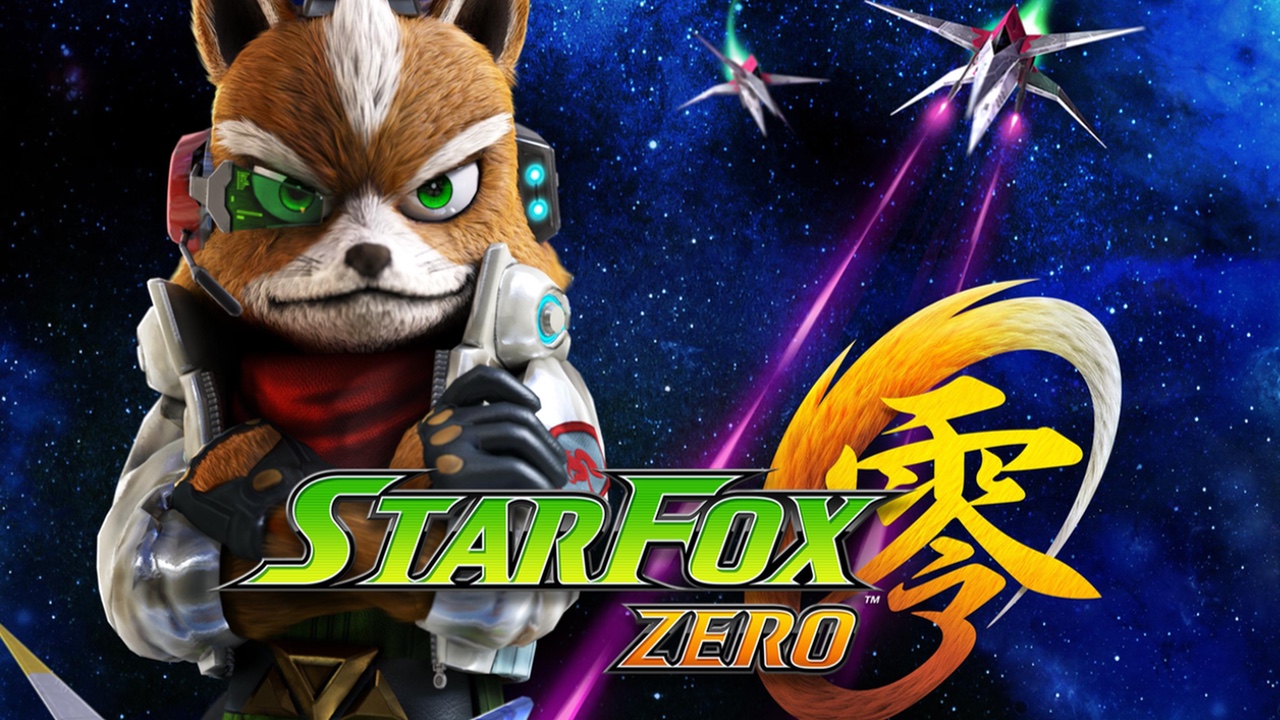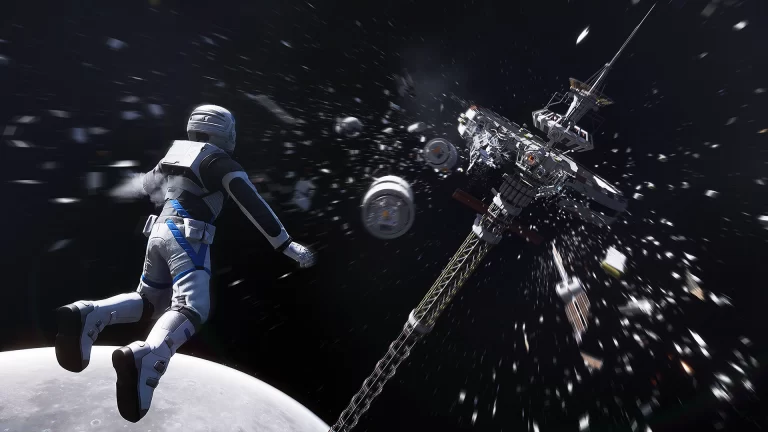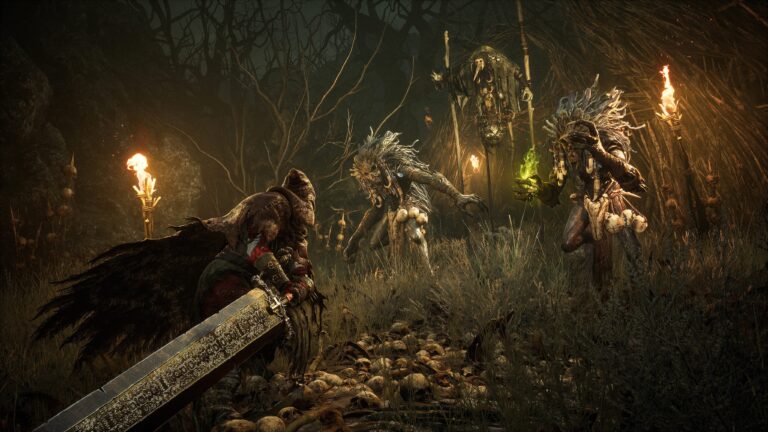Star Fox Zero – Review
Platform – Wii U
Developer – Nintendo EPD, Platinum Games
Publisher – Nintendo
MSRP – $59.99 USD
(Editor’s Note: This game was reviewed on the Wii U with the game copy being provided by Gaming Instincts.)
Introduction
After waiting for a great deal of time for the next definitive installment in the Star Fox franchise it has finally emerged as Star Fox Zero for the Wii U. Both long-time fans of the series and newcomers alike can finally experience this joint effort by Nintendo and Platinum Games. This title has been delayed time after time for various reasons without a terrible amount of light shed the exact reasons. Regardless, this is a title that will most likely be a disappointment to fans and may annoy new gamers alike. Sub-par visuals, severe issues with control agency and a genuine unwillingness to differentiate itself from its previous brethren in a meaningful way make Star Fox Zero a truly heartbreaking experience.
Story and Narrative Structure
You probably have never heard this story before. The Lylat System is under attack from the forces of Andross and it is up to the mercenary team known as Star Fox save the day. Sarcasm excepted, the game’s story is almost a note-for-note carbon copy of Star Fox and Star Fox 64. There have been slight changes to the formula, but it is shocking that both Nintendo Platinum Games did not feel the need to create something new in this department. Instead of Slippy crash landing on a desolate planet, Peppy is the one in need of saving. Zoness is still a toxic waste dump of a planet which has a mission requiring subterfuge much like the mission on the same world as the N64 title. Even Star Wolf makes a return appearance in Star Fox Zero, and so do likes of Katt and Bill.
To be fair, it is nice to have some callbacks to the earlier titles, as some veterans will probably chuckle with glee when they hear a familiar piece of dialogue or music. It is easy to understand and accept that a game can pay homage to its predecessors, but there needs to be more to it than simply that. With all of the time that was taken making this game a reality, it is questionable as to why the story and the characters could not be augmented with new elements and characters.
It is only marginally different from Star Fox 64, especially when comparing it to the changes in the lore between the Super Nintendo original and the Nintendo 64 sequel. This area desperately needed expansion, but the developer only saw fit to stir around the preexisting elements and possibly thought it was a substantial rewrite of the series’ narrative. It was not. This is not the thing that will drive the experience and push players to press forward or feel that their carry more weight or meaning. The story of Star Fox Zero is serviceable at best, delinquent at worst and could have benefited from being an actual sequel to past events. The time that could have been better spent improving this issue was undoubtedly used to create another problem that bogs the experience down.
Gameplay
Like previous core entries in the series, Star Fox Zero is an arcade style 3D rail shooter that also includes free-flight space combat using the iconic Arwing fighter craft. It is a game that has 3D space flight combat simulation aspirations, but never fully crosses the line into that realm. To add variety to this old formula, Nintendo and Platinum have exhumed some elements from the canceled Star Fox 2 as well as Star Fox 64 to give players something more to do than simply engaging in dogfights.
Some missions will require you to transform into the Walker mech to wreak havoc inside bases and large cruisers, which is a fun diversion from the standard rail shooter sections from the outset. Other levels demand stealth, subterfuge and the hovering Gyrowing to hack into bases with an on-board robot AI. These varied of game play styles are well peppered across the numbered world of the Lylat System. Powerups abound in the form of rings to restore health, Nova Bombs to acquire and Wing Blasters to improve the Arwing’s laser cannons. There are also collectibles to be found while trying to shoot down to add to your final score at the end of each mission. These elements permeate both the standard single player and arcade modes. Getting hi marks on both modes will eventually to new unlocking more side missions to tackle in the training mode as well as some fun and nostalgic Easter eggs.
Like the first games Zero can be a cure for that arcade-style score attack itch, as there medals awarded through physically collecting them throughout levels and shooting down enemies. With how varied the levels are, this can potentially be an enticing proposition. Getting enough medals can unlock some cool bonus content that can, like the reference-riddled story, strike a nostalgic chord for fans of the franchise. This and the presence of a two player co-op mode, where one player pilots the Arwing and the other mans the weapon systems, are two areas where the game has some replay value. There are a lot of great concepts and ideas in Star Fox Zero, but chances are you will have contend with some abhorred design decisions in order get to them.
Control and Player Agency
It is obvious that Nintendo wanted to do something revolutionary with Star Fox Zero, as is tradition with the majority of the franchise. The Super Nintendo game’s flat shaded polygonal 3D graphics along with the Super FX chip left a mark on the industry as far as home console games go. The N64 title introduced forced feedback via the Rumble Pak, which is now an industry standard. Even Star Fox Command innovated with its use of the secondary touch screen and stylus controls. These marriages of software and hardware are what helped to make the previous titles (Star Fox Adventures excepted) interesting along with its rail shooter and space flight combat elements.
However, the powers that be decided to arbitrarily change the control agency mechanics in an effort to be innovative. These design choices have culminated into a control scheme that is a helter-skelter mess that cannot be changed or customized. It is important to note that, during the course of the main game, the player can take control of the Arwing that can transform into the Walker, the Landmaster that can transform into the Gravmaster and the Gyrowing.
Piloting the Arwing may perhaps be the most infuriatingly unplayable aspect of Star Fox Zero. When maneuvering the craft the controls changed to using a dual joystick layout as opposed to the more traditional shoulder and face button scheme for tilting, rolling and controlling the throttle. This leads to overly sensitive controls with which you will find yourself rolling and performing aerial stunts without intending to do so. This alone is problematic, but the worst of this brand new agency system has to do with steering the Arwing and aiming. Completely disregarding the fact that the iconic fighter craft is indeed a one-man fighter craft, Nintendo and Platinum saw fit to force the player to aim the laser cannon independently of forward direction of the ship using the tablet controller’s gyroscopic sensor. The player can only disable its use when not firing lasers, but that is the same time when being able to just use the craft’s direction to aim would be the most necessary. When constant motion controls are on, you will have to re-calibrate sensor quite frequently. The barrel rolls are accomplished by flicking the right stick to the left or right twice. Not only does this lead to spasmodic barrel rolls, but it is not ergonomically pleasing because of where the sticks are located on the tablet controller. These design choices are completely baffling and make one wonder how anyone could possibly think that gimbaled weapons on a fighter craft is ever a good idea.
There is a good reason why games that feature light fighter crafts engaging in space-faring combat are almost never equipped with gimbaled guns. This is because it is hard for one pilot to aim his or her shots independent of the craft’s direction. Even in real world aviation this design paradigm is standard. The types of crafts that use gimbaled armaments are usually large freighters and cruisers because of their lack of maneuverability and mobility. However, with a spry fighter like the Arwing, there is absolutely no need for this alteration. The ending result is the worst iteration of the Arwing to ever be featured in a Star Fox title – even worse than Adventures. This was an area in the series formula that was neither stale nor in need of arbitrary changes and all it does is make the game more of a chore during these sections.
The Walker mode is actually more horrendous in the agency department, as it seems bent on squandering the potential seen in the prototypes of Star Fox 2 in which the concept was initially birthed. In Star Fox 2, the Walker had very intuitive controls attached to it. The D-pad would allow it to move forward, backpedal and strafe freely while the shoulder buttons would rotate it left and right accordingly. In Star Fox Zero, the Walker is bound to a control system that does not allow for free strafing, with one stick controlling forward and backward motion while the other rotates the bipedal mech. Strafing can only be done through using Z-targeting and renders the player incapable of rotating the Walker during the process.
While the Walker has jump jets that can slowly propel it upwards, this advanced vehicular mode cannot jump. Simply put, trying to pilot this thing is the antithesis of intuitive. Why the perfectly fine control scheme from Star Fox 2 was thrown out in favor of the current controls is anyone’s guess. These vehicles along with the other aforementioned offerings are plagued by similar issues, but the true fatal flaw of Star Fox Zero is its implementation of the dual display system.
Display and Tablet Screen Functionality
In order to facilitate the gimbaled gun aiming, the tablet screen displays a first-person cockpit view of the action. The TV displays a third-person exterior view that allows the player to see the Arwing. Both displays feature a targeting reticles that are supposed to indicate where your shot will land. It seems like a great idea in theory, but the execution of this concept produces two perspectives that are equally unreliable in their own ways.
The third-person view has an issue that borders on being unforgivable. The first problem is that the camera only lazily chases the player’s craft which produces very awkward angles of perspective. This constantly affects the reticule’s accuracy in this view. There are countless occasions where shots land above, below and on either side of where the reticule indicates. There appears to be no good method in which to fix this, so it renders that reticule’s existence moot. The only way to truly hit anything is to rapidly fire lasers and use them as tracer guides much like the first Star Fox on Super Nintendo. On top of this problem, the game will sometimes force the camera pull back from tracking the ship to offer a more “cinematic” view. In some game play sections, it is optional, but it offers the player no tactical advantage and is more of a liability than it is an aide. When it is forced the player is force to look at the cockpit view on the game pad screen, which has its own issues.
The first-person cockpit view actually has a reliable targeting reticule along with dynamic markers. These markers will pop up to indicate key enemies and allies in need of assistance and where they may be in relation to the camera’s current field of view. It could have been a solid solution to override what is wrong with the third-person display, but even this display is marred with some flaws. With the tablet screen having its own awkward screen size and resolution, it is very restrictive in what the player can see to the left or right. It is almost impossible to have any awareness of what is around you. It is also very easy to lose veering targets during All Range Mode sections, which segues into something not included in this secondary display that should have been included. There is absolutely no radar to be found in the game, not even during free-range combat areas. This is a cringe-worthy omission, as the radar display is a standard in games that feature space-faring combat in a free flight format. Even Star Fox 2, Star Fox 64, Star Assault and Star Fox Command had this arguably essential feature.
It is almost as if both the control and display systems were intentionally gimped in order to suit gameplay situations that require the player to constantly look back and forth between two displays to do the job that one could have done with higher aptitude. The choice to go with this format also to the detriment of the game’s overall graphical fidelity.
Graphics and Visual Presentation
It cannot be denied that Star Fox Zero is a beautiful game from an artistic perspective. All of the ships and structures, though lifted from previous core titles in the series, have a sharp and cleaning geometric rendering about them. In this respect, the title perhaps lifts too much from other entries when it comes to the simplicity of the models, but the emphasis is put in the modeling of the crafts and looks very detailed. The exterior environments are definitely the better-looking sections when compared to the interiors of enemy installations. With these areas, the facilitation of the simultaneous dual screen rears its ugly head because the compromise leads to low-resolution textures across the board.
Everything looks incredibly blurry when looking at the current standards of visual fidelity. While this issue plagues the entirety of the game, it is obvious during these areas. The lowered graphical qualities also are seen in the particle effects which look dated, looking as if the game is an early generation Xbox 360 title. It is such a shame that the visuals were so heavily compromised because there are some truly epic set pieces and memorable experiences to be had. Infiltrating a large capital ship, destroying its core and barely escaping it in time to see it obliterated by the Cornerian fleet is an unforgettable moment. Dogfights with the Star Wolf are tense and the boss fights can be just as exhilarating. These great moments are hindered by the muddy textures and lower resolution which is sad, but the sound and music do go some length to support what is happening on-screen.
Sound Design and Aural Presentation
The score of Star Fox has to be one of the high points of Star Fox Zero. It does a great job in paying homage to Star Fox 64 with some fully orchestrated renditions of classic tracks as well as bringing some new welcome editions to the mix. Everything sounds appropriate and gives the game an epic feel more often than not. Though it never completely deviates from the orchestral elements like the first game dared to do, it is a part of this title that truly shines.
The sounds of Star Fox Zero are an equal blend of touched up effects from previous games with additional effects for the new enemies and playable vehicles. The fully voiced dialogue also follow this philosophy. It is still just as delightfully cheesy as ever, but it does add a tad more dimension to the characters. Slippy ends up actually having some moments where he has a rigid get-it-done attitude as for where Falco will let his sarcastic maverick attitude disappear when he is truly thankful for receiving aid. These sort of details are what the game needed more than an arbitrary need to use the tablet just because. However, this need is fulfilled with the game forcing spoken dialogue to only be output through the controller’s speakers. This was perhaps done to make it sound more like radio chatter because of the lowered sound quality of said speakers, but there should have been an option somewhere.
Final Verdict
It is very hard to make such heavy criticisms like this to such a highly anticipated game like Star Fox Zero. The game shows so much promise in all aspects of the game’s overall presentation. Unfortunately, the unnecessary changes to the control agency, the dual screen system that undermines the visuals and the overly rehashed story truly shows how flawed this title’s execution is. The areas that needed innovation were barely touched and the elements that did not need fixing were completely redone to lower aptitude. Even with the few interesting parts to be taken from the experience, Star Fox Zero is a title that is less than the some of its parts and is nigh unfeasible to recommend.
No related posts.









